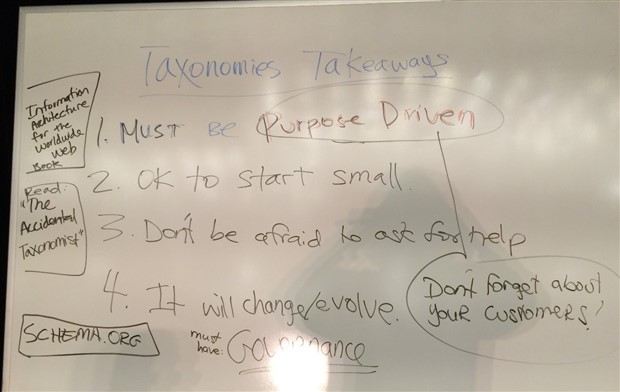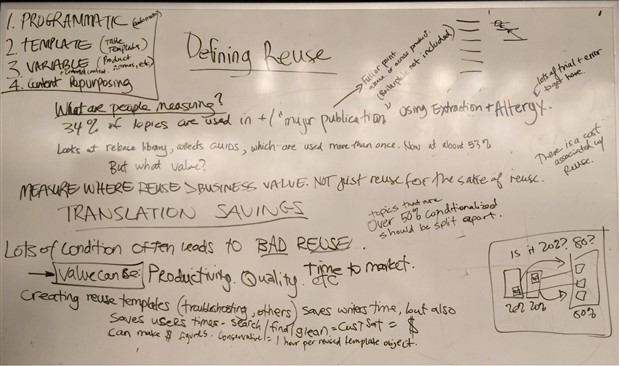Elizabeth Gschwind from FICO has led the independent SDL Knowledge Center User Group as a volunteer since 2012. Her time and efforts for the community have paid off well with a strong community that openly shares best practices and is a model for any user group. In this blog she talks to the many benefits and successes of a user community.
Some History
To give you some background, I had been a user of SDL products for many years before FICO made the investment in DITA, and the SDL Knowledge Center (then Trisoft) and Translation Management System (TMS) solutions in 2009.
A TMS user group existed at the time, which I joined, and later led, which gave me some good experience to launch the much anticipated user group for SDL Knowledge Center.
I worked with SDL to get a list of current KC clients, sent them all an email blast to gauge interest, and then set up our first meeting. That was in July of 2012, and I am proud to say that we are now a very active and engaged community of peers.
SDL Knowledge Center User Group Stats
- Our first meeting in 2012 included 20 attendees from 11 companies
- Today, we have around 125 members from 60 companies
- We meet once a month via web conference, and occasionally in-person at industry events
- A couple of smaller user groups have been established in EMEA and APAC
- We also have a LinkedIn group that our members can join, in addition to the SDL Community site for continuing discussions offline
In your opinion, what is a “user group”?
In my experience, a user group is essentially a group of people from various backgrounds who come together to find ways to support business goals. Our mission is to develop and share best practices - as well as general learning and support - as they relate to the tools we are using to meet those goals.
Why do you think the KC User Group has been so successful?
One of the reasons that I think user groups are so popular is because they are not necessarily managed by the technology provider. SDL does not attend our meetings, which makes the members a little more open in their talking points. Also, when another customer talks about how something they have implemented has worked wonders for them, it carries a lot more weight than coming from the vendor, where it would probably just feel like a sales pitch. And users are very creative with the tools – we have come up with inventive ways to work with the tools that might not have been part of SDL’s original design. It’s pretty interesting.
Another thing that works well for our group is that we tend to be pretty relaxed and informal. Participation is 100% voluntary and we understand that people are busy with their regular jobs. We do set goals and form “task forces” for specific topics that warrant additional investigation (for example, we have a Taxonomy task force working on best practices and tool offerings for defining and implementing a taxonomy into your DITA environment). But the overall idea of the group is that we are there to mutually support each other.
What does an average meeting look like?
We meet for one hour, once a month, over WebEx. I take a few minutes at the beginning to discuss updates on conferences and webinars, to check in on any progress made by the task forces, and other miscellaneous topics we might be tracking. Then we get into the main agenda, which is generally where we discuss one or two best practices (we all share how we have set up our tools and workflows etc. to support the challenge/best practice, to learn from each other and potentially improve our internal processes). We do occasionally have users give us demos of how they are working with the tools in innovative ways.
We use any remaining time on what I call the “Open Forum”, which is probably my favorite part, because you never know where these discussions will lead you. Open Forum questions can be anything – from complex technical questions, to basic questions from newcomers. The funny thing is that it’s often the seemingly obvious questions that lead to the most vigorous debate! And these open forum topics often end up turning into best practices discussion themselves for future meetings.
I try to send an agenda a couple of days before the meeting, so that members can invite people from their team who would be interested in those particular topics. And I send minutes after each meeting, too.
Do you have formal goals?
Again, nothing is too formal with our user group. We do have some understood goals though. In mind, there are 3:
- Share best practices in working with the tool
- Share practices in our internal work procedures supported by the tool
- Work with SDL to resolve questions or suggest improvements for the tools
How involved is SDL staff in your user group?
SDL has been a great, supportive partner to the user group. I meet with SDL representatives after each call to go over the main themes of the call, and ask them questions about road map or other general product capabilities that came up during the meeting. Our various task forces have meetings with SDL representatives when appropriate to do deeper dives into specific areas and report back to the group. SDL has been very receptive to working with the user group because we all see the benefit of understanding how we – a large number of active users - are using the tools to accomplish our goals. It’s not just a developer in a cubicle guessing what we are doing. We really like being able to “speak with one voice”.
Another thing that is worth mentioning is that SDL hosts conferences and other events regularly. In general, about once a year, the user group is invited to attend an in-person user group meeting at one of these events. SDL sets up the room and gets the whiteboards/screens for us, and leaves the rest up to us to organise. I’m sending snapshots from one of these “user days” to give you some examples. No PowerPoint presentations – just brains and whiteboards/markers.
Whiteboard from Taxonomies session during in-person user group meeting (2015)
Whiteboard from Defining Reuse session during in-person user group meeting (2015)
Whiteboard from Moving to Mobile session during in-person user group meeting (2015)
Any last thoughts?
I think the main thing is that joining the user group is a pretty small investment for a huge gain. Our conversations are interesting, productive, and fun!
I would encourage any user of KC to join the group (keep in mind that I try to limit attendance to 3 or so members per company, so we get a wide range of opinions and experience in the discussions). I’ve really enjoyed the collaboration and establishing professional friendships with the other users, and helping us all do our work better and more efficiently.
Thank you Elizabeth for your leadership and contributions to the SDL Knowledge Center User Group. If you are a SDL Knowledge Center or SDL LiveContent user and interested in joining, please contact Elizabeth at ElizabethGschwind@fico.com.
Explore User groups
- XyUser Group
- SDL Web West Coast User Group
- SDL Web User Group New England
- Tridion user Group Benelux
- Tridion User Group Ohio Valley
- SDL WorldServer User Group
For more content like this, please 'like' this blog and leave your comments below;

 Translate
Translate



